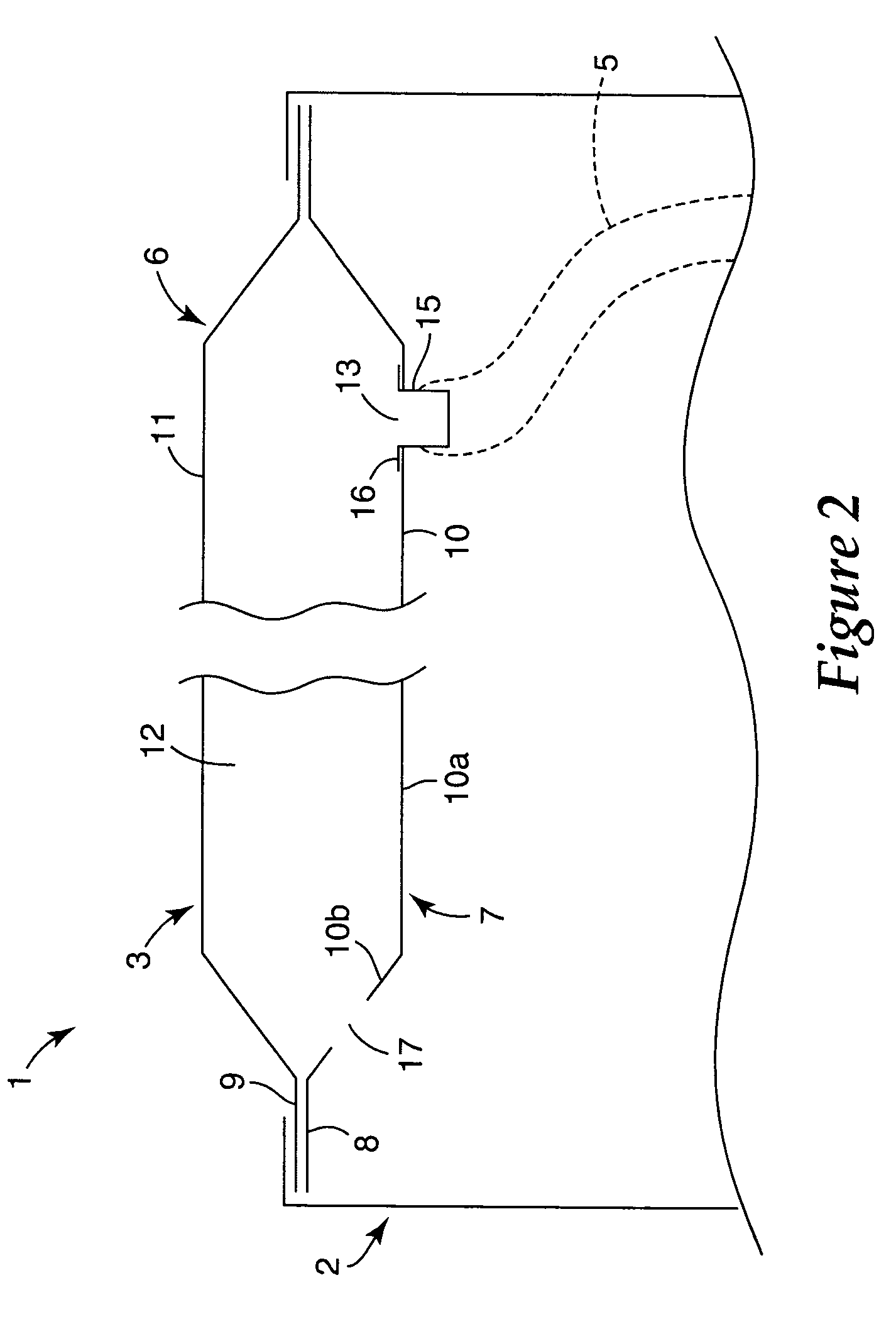Rigid air ducting for respirator hoods and helmets
a technology for respirator hoods and helmets, applied in the direction of hats, breathing masks, breathing protection, etc., can solve the problems of insufficient air flow, unstable shape and volume cabs, and reduced air flow
- Summary
- Abstract
- Description
- Claims
- Application Information
AI Technical Summary
Benefits of technology
Problems solved by technology
Method used
Image
Examples
second embodiment
[0088]In FIG. 8, a respirator hood according to the invention is shown in which like reference numerals in the series 100 are used to indicate parts corresponding to FIGS. 1 to 3.
[0089]In this embodiment, the upper end of the side wall 102 is turned over and secured in fluid tight manner by welding or adhesive bonding to the edge flange 109 of the top wall 103 as previously described. The internal wall 107 is inserted into the hood 101 and is releasably secured in a substantially fluid tight manner to the underside of the top wall 103 around the perimeter of the hood 101 to form the air chamber 106. Any suitable means (not shown) may be used to secure the internal wall 107 such as by poppers with additional sealing where required.
first embodiment
[0090]In this way, the internal wall 107 can be removed and replaced if damaged or removed and re-used with another hood 101 if the hood 101 is designed to be disposable. In this arrangement, the hose 105 may be permanently attached to the internal wall 107 so as to be detachable with the internal wall 107 as a unit for cleaning, replacement or re-use. In other respects, the operation of the hood 101 is similar to the first embodiment and will be understood from the description thereof.
third embodiment
[0091]In FIGS. 9 to 12 of the drawings, there is shown a respirator hood according to the present invention in which like reference numerals in the series 200 are used to indicate parts corresponding to the previous embodiments.
[0092]In this embodiment, the shape of the top wall 203 and internal wall 207 is altered to reduce the overall height of the side wall 202 of the hood 201 and to allow styling of the shape of the hood 201 to enhance the appearance of the hood 201.
[0093]As shown 11, the hood 201 has an ovoid shape in plan view with the wider rounded end at the front of the hood 201 and the narrower rounded end at the rear of the hood 201.
[0094]The internal wall 207 has a dome-shaped central region 230 defining a recess 231 open to the underside in which the top of the head of the user can be received. The dome-shaped central region 230 is surrounded by a recessed channel 232 terminating in an outwardly directed edge flange 208.
[0095]The channel 232 is wider and shallower at th...
PUM
 Login to View More
Login to View More Abstract
Description
Claims
Application Information
 Login to View More
Login to View More - R&D
- Intellectual Property
- Life Sciences
- Materials
- Tech Scout
- Unparalleled Data Quality
- Higher Quality Content
- 60% Fewer Hallucinations
Browse by: Latest US Patents, China's latest patents, Technical Efficacy Thesaurus, Application Domain, Technology Topic, Popular Technical Reports.
© 2025 PatSnap. All rights reserved.Legal|Privacy policy|Modern Slavery Act Transparency Statement|Sitemap|About US| Contact US: help@patsnap.com



